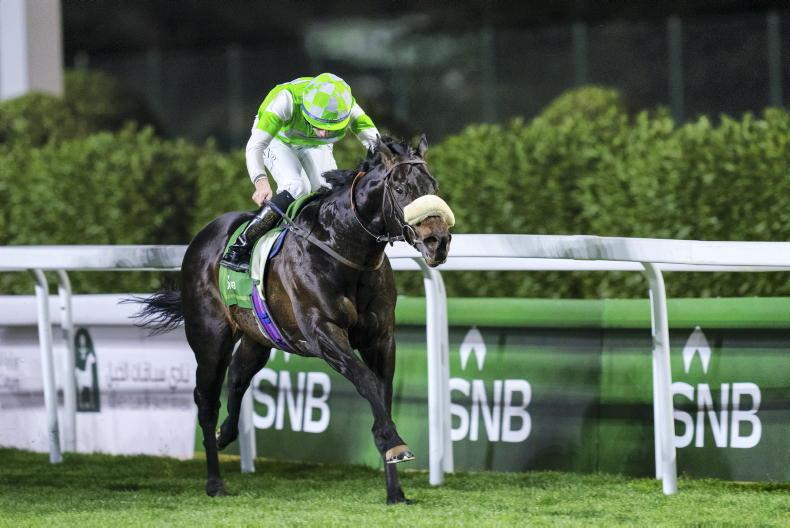I’VE taken the opportunity to work with the Jockey Club of Saudi Arabia (JCSA) in Riyadh this winter, and I must say my occasional quibble with the British form book pales into comparison with the clunky and often inaccurate version we have to work with here to provide analysis. On top of that, the cards at King Abdulaziz Racetrack here in the city have 12 races every day, with 20 runners and up to four reserves in most, making the task of writing comments for all of them somewhere in the herculean region, even if all the information was accurate.
In fairness to the Jockey Club here, they have been developing a more modern website in partnership with Weatherbys to provide a greater range of information, including the importation of formlines from other jurisdictions, but it’s early days and the gremlins will hopefully be ironed out (can you iron out gremlins? That movie would probably have been very different if you could).
On the subject of foreign form, one of the most interesting aspects of working here is spotting the large number of ex-British and Irish horses running here with varying degrees of success.
Many of the races here are for locally bred horses although the increased number of imported stallions from the US along with proven racemares to stock the breeding sheds means these are getting stronger all the time, while there are plenty of opportunities for imported horses to race, and quite a number of former turf performers are adapting well to the dirt surface at Riyadh, which is much kinder and with significantly less kickback than US dirt surfaces, making it easier for turf horses to adapt.
A new life
If you’re wondering what happened to the horses who finished behind Bolshoi Ballet in the 2021 Ballysax Stakes, I can tell you that at least two of them are happily plying their trade here. Lough Derg returned from a lengthy absence here a couple of weeks ago to run well in a non-winners of four contest, looking as if badly in need of the run, while Wuqood, who proved to be a disappointment for Dermot Weld has recently reinvented himself here, winning a seven-furlong handicap on dirt in first-time blinkers off a mark of 85.
That win came in a contest worth 135,000 SAR, the equivalent of around €30,000. Both those horses are now racing for leading owner Prince Faisal bin Khaled bin Abdulaziz, a member of the burgeoning Saudi Royal Family and grandson of the nation’s founder, King Abdulaziz.
Although the much-vaunted Saudi Cup is worth an astronomical amount, most races in Riyadh have prize funds which are roughly the equivalent of similar races on the domestic front, although the prestigious Cup races which take place most weeks have extra value added.
Racing here this week is pretty low-key but the six-furlong open race last night featured horses with form in the UK, and saw an impressive winner in Muqtahem, who made all at a fast pace to beat another ex-pat in the shape of Mahalik (ex-Karl Burke).
Muqtahem, was last seen on British soil behind Big Evs in the Windsor Castle Stakes at Royal Ascot in June 2023, and it is typical for owner Sheikh Abdullah Almalek Alsabah to race his two-year-old prospects in England before transferring them to trainer Thamer Aldaihani in Riyadh. The owner has a reputation for shuffling his horses around in the UK but Aldaihani has enjoyed plenty of success with them here and they very much stay put under his care.
Successful imports
Final Destination is typical of the owner’s approach. He was unplaced in one start for Kevin Philippart de Foy in 2022 but has since developed into one of the best imported horses in the Kingdom winning championship contests at both Riyadh and Taif (the country’s second racecourse used in summer when it’s too hot to race in Riyadh) and enabling the Sheikh to be crowned champion owner with imported horses last season.
Aldaihani, a Qatari national, speaks excellent English and reveals that he will now only train imported horses, which means a greater influx of British-bred youngsters in the coming years, with English trainers effectively pre-training these expensive recruits for what will be their main job on Saudi soil, or rather dirt.
It’s not all dirt, however, and clerk of the course Keith Otteson (another GB import!) is looking to expand the turf programme, with racing starting on the grass next month, five weeks earlier than in previous seasons when the number of turf races has been strictly limited. Mick Appleby’s Annaf won a Group 2 on turf here last season with the Kieran Cotter-trained Matilda Picotte also making the money, and with just shy of £1m the prize for that contest, Appleby and Cotter will be keen to return, and others will follow.
In the meantime, the vast majority of races run outside of Saudi Cup weekend are for local owners, but given the wealth of Saudi Arabia, those local owners have a considerable reach in the bloodstock world, and the number of expensively purchased yearlings and two-year-olds being sent directly to Saudi Arabia to race is increasing, with a knock-on effect when it comes to the pool of horses available on the domestic scene.
The only limiting factor now is the fact that there are only two racecourses here, but there is demand for more competition among the racing fraternity and there is talk of another new track in development. If that comes to fruition, racing here is likely to explode in popularity, and the vision of the JCSA is to make Saudi a preferred destination to Dubai for international racing.
